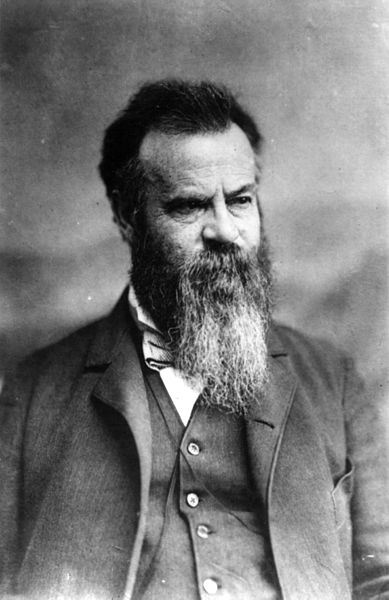John Wesley Powell was an American geologist, U.S. Army soldier, explorer of the American West, professor at Illinois Wesleyan University, and director of major scientific and cultural institutions. He is famous for his 1869 geographic expedition, a three-month river trip down the Green and Colorado rivers, including the first official U.S. government-sponsored passage through the Grand Canyon.
Powell as he appears at the National Portrait Gallery in Washington, D.C.
Powell served as the second Director of the United States Geological Survey, a post he held from 1881 to 1894. This photograph dates from early in his term of office.
John Wesley Powell and his wife, Emma, in Detroit in 1863.
First camp of the John Wesley Powell expedition, in the willows, Green River, Wyoming, 1871.
Powell Geographic Expedition of 1869
The Powell Geographic Expedition of 1869, led by American naturalist John Wesley Powell, was the first thorough cartographic and scientific investigation of long segments of the Green and Colorado rivers in the southwestern United States, including the first recorded passage of white men through the entirety of the Grand Canyon. The expedition, which lasted approximately three months during the summer of 1869, embarked from Green River Station, Wyoming Territory and traveled downstream through parts of the present-day states of Colorado and Utah before reaching the confluence of the Colorado and Virgin rivers in present-day Arizona and Nevada. Despite a series of hardships, including losses of boats and supplies, near-drownings, and the eventual departures of several crew members, the voyage produced the first detailed descriptions of much of the previously unexplored canyon country of the Colorado Plateau.

First camp of the second John Wesley Powell expedition, in the willows, Green River, Wyoming, 1871. There were no photographs taken on the 1869 expedition.




